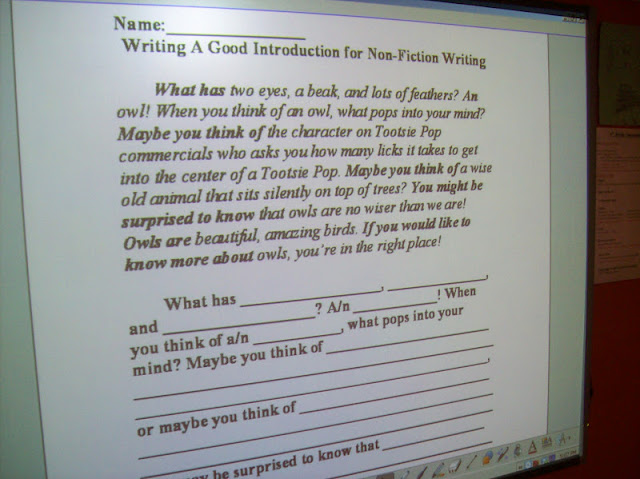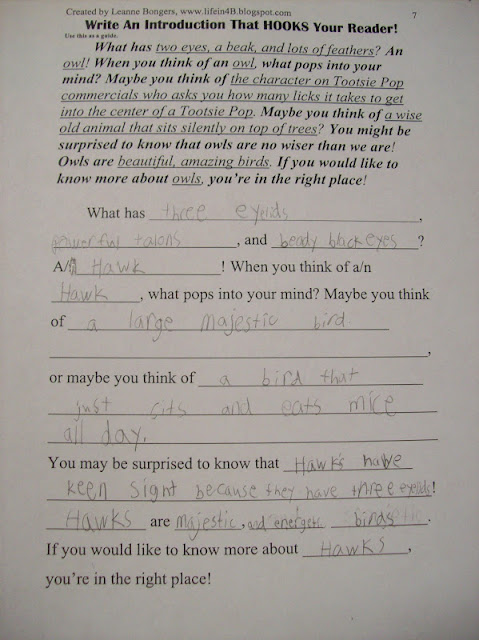Now that we had the body of our animal reports written (the paragraphs about habitat, diet, and defense mechanisms), it was time for students to write their introductions. A good introduction HOOKS a reader into wanting to read more!
In order to know how to write an introduction that hooks a reader, we analyzed several introductions from real non-fiction authors to see how they did it! This introduction came from a book about pelicans. We noticed that this introduction included DESCRIPTION and QUESTIONS.
This introduction came from a book on wolves. We noticed that this author also asked QUESTIONS, CONNECTED TO OUR SCHEMA, and shared SURPRISING INFORMATION.
And in this introduction from a book on owls, the author PAYS THE ANIMAL A COMPLIMENT and INVITES THE READER to read more.
We added all this great information to our organization anchor chart we created earlier in the year. (All of our new learning is in orange.)
To help scaffold my kiddos into writing an introduction that included all of the 'hooking characteristics' we learned from the mentor texts we analyzed, I wrote my own introduction for my own report on owls and also created a template for students.
Students wrote their own introductions using the template so that their introduction would HOOK US! This template and all the other sheets students have and will be using in this unit can be found here! :)
Here is the introduction Casey wrote for his report on lynx!
Here is the introduction Blake wrote for his report on deer!
Tomorrow, we will be following this same process for writing our conclusions to our animal reports.
----
Our third quarter reading genre focus is BIOGRAPHY. Yesterday I introduced the genre to our kids. I also listed several characteristics of most biographies. Prior to my lesson, I put post-its where I located all of the features and showed each example as we filled in the anchor chart of all the characteristics.
For guided practice, we handed out biography books to pairs of students. We asked them to page through their books to see if they, too, could locate all the characteristics of a biography.
Here's some footage of their biography characteristic hunt!
Students got a chance to share their discoveries. One of the discoveries was that it was a little difficult to locate the birth information. It didn't appear on the first page as students had thought! This student-initiated discovery became my mini-lesson for today. :) (I love it when that happens!)
Today we zoomed in on characteristic #5: Chronological order. I had specifically left a box on our anchor chart from yesterday so that I could address the unique structure of most biographies - the first chapter or introduction is written to HOOK US, then the next part of the book goes into the beginning of the person's life.

For guided practice today, students got another biography book and analyzed the first chapter/introduction to identify how it hooked them, followed by locating the birth information in the next chapter. Students used the sentence stems on the chart to formulate their response for when we shared. This study of introductions really went hand-in-hand with our lesson in Writer's Workshop on writing an introduction for our animal research! (Again, I love it when that works out!) To see the next lessons from our biography unit, click here!










